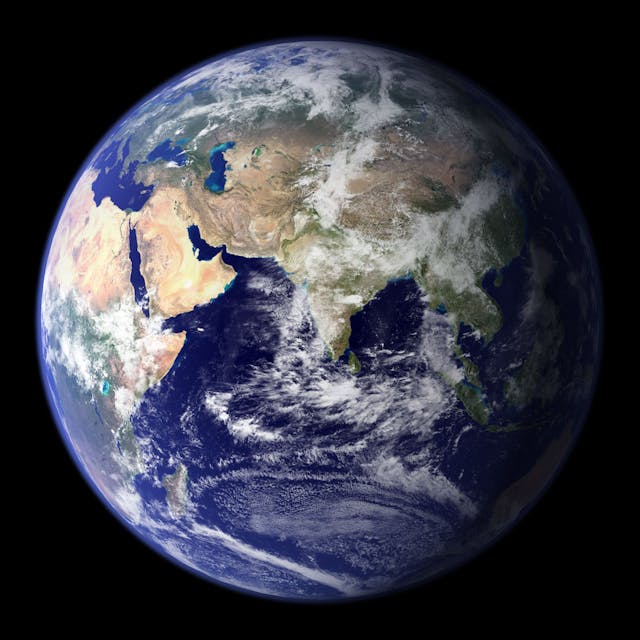
How did humans spread across the world? Generally, early humans moved around the world using land bridges or ice bridges. Occasionally, they may have used boats.
The first migration happened before home sapiens had even evolved. Homo erectus evolved in central Africa at least three million years ago. This can be attested to by the oldest stone tools that have been found. From there, over the next million years or so, Homo erectus spread up into Eurasia and across into Asia. Once they had reached these places, they gradually evolved. In Eurasia, they became Neanderthals, in Asia, they became Denisovans, and in Africa, they became Homo sapiens, who had evolved by about 300,000 years ago.
The great migration of Homo sapiens from Africa that would end up with us on every continent on Earth began about 70,000 years ago, but that is not the first time that Homo sapiens travelled out of Africa. The first migration appears to have started about 125,000 years ago, and they travelled into the Middle East, southern Asia, and possibly southern Europe. There is no evidence that they made lasting settlements, so they were either beaten in competition for food by the Neanderthals and Denisovans, or they were assimilated.
The second migration, and the one that resulted in us being here, started about 70,000 years ago. This time, Homo sapiens were the dominant species in every place they settled, slowly pushing the Neanderthals and Denisovans to extinction. What had happened? No one really knows, but a dominant theory is that our brains suddenly increased in size. Huge quantities of shellfish shells have been found in ancient Homo sapiens settlements. This is linked to a sudden increase in innovation among Home sapiens that started about 80,000 years ago, such as more intricate tools, jewelry, and rudimentary farming. It is possible that the fatty acids from the shellfish fueled these new, bigger brains, and set us on our path. It is very likely that these larger brains enabled speech, which would give us a huge advantage over every other type of human. About 10,000 years after this, humans started to leave Africa. It isn’t like they just picked up and walked out of Africa. It was a process that took generations, with each generation moving further away.
So, how did they get to every continent? Most of the time, they just walked. 70,000 years ago was at the start of the Wisconsinan glacial period. Ice sheets reached halfway down North America and halfway down Europe. This is the glacial period that left the great lakes in North America when it retreated. Sea levels were 100 m lower than they are today and many of the continents were connected together. Africa was connected to Asia through Egypt, as it is today, but also through Yemen. It was also connected to Europe through Morocco and the bottom of Spain. Europe was entirely connected, including the UK, and Asia was connected by land bridges almost as far as Australia. The sea level continued to drop until it peaked at about 130 m below modern levels 20,000 years ago, and then it rapidly rose as the ice melted.
Homo Sapiens started by following the coasts and that took them across the land bridges into the Middle East by about 70,000 years ago. They kept going along the coasts and within 5,000 years, they had travelled around India, down through Asia, and into Australia. The land bridge didn’t go all the way to Australia, so the early Homo sapiens had to make boats to traverse the gaps. The Homo Sapiens that were in the Indian subcontinent started to move north, east, and west. By 50,000 years ago they had reached the Turkey area and 5,000 years after that, they were across southern Europe. At the same time, people were moving through Asia and by 45,000 years ago, they were in China. By 30,000 years ago, Homo sapiens had reached the edge of the ice sheets all across Europe and Asia and had also crossed to Japan. Then there was a pause until the ice started to recede, and they continued north, occupying northern Europe and Siberia by 12,000 years ago. Roughly 15,000 years ago, Homo sapiens crossed the land bridge between Siberia and Alaska and began to move down the Americas. There is one theory that they built boats and sailed along the coast, but any settlements there might have been would have been buried when the sea levels rose. By 10,000 years ago, people were everywhere except for Greenland, Iceland, Hawaii, New Zealand, Papa New Guinea and Madagascar. All of them were finally settled, but it would take until about 1,000 years ago for people to reach Hawaii and New Zealand. They were Polynesians and they sailed there by boat. And that is how humans spread across the world and that is what I learned today.
Photo by Pixabay: https://www.pexels.com/photo/earth-wallpaper-41953/
Sources
https://en.wikipedia.org/wiki/Early_human_migrations#/media/File:Early_migrations_mercator.svg
https://www.smithsonianmag.com/history/the-great-human-migration-13561
https://education.nationalgeographic.org/resource/global-human-journey
https://www.e-education.psu.edu/earth107/node/1496
https://en.wikipedia.org/wiki/Wisconsin_glaciation
https://upload.wikimedia.org/wikipedia/commons/b/b0/Global_sea_levels_during_the_last_Ice_Age.jpg

Pingback: How did humans spread across the world? - English Reading Practice